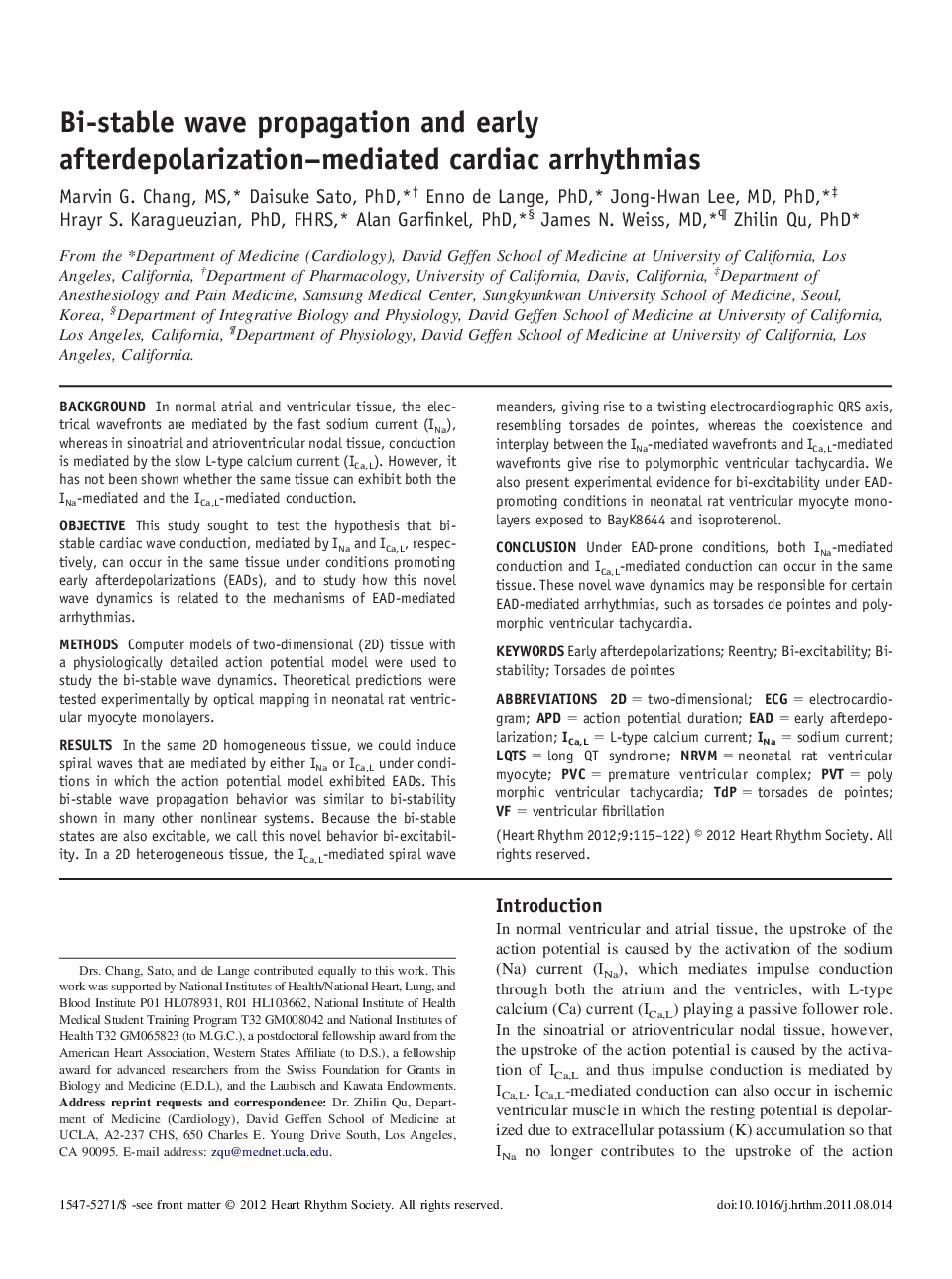| Article ID | Journal | Published Year | Pages | File Type |
|---|---|---|---|---|
| 2922867 | Heart Rhythm | 2012 | 8 Pages |
BackgroundIn normal atrial and ventricular tissue, the electrical wavefronts are mediated by the fast sodium current (INa), whereas in sinoatrial and atrioventricular nodal tissue, conduction is mediated by the slow L-type calcium current (ICa,L). However, it has not been shown whether the same tissue can exhibit both the INa-mediated and the ICa,L-mediated conduction.ObjectiveThis study sought to test the hypothesis that bi-stable cardiac wave conduction, mediated by INa and ICa,L, respectively, can occur in the same tissue under conditions promoting early afterdepolarizations (EADs), and to study how this novel wave dynamics is related to the mechanisms of EAD-mediated arrhythmias.MethodsComputer models of two-dimensional (2D) tissue with a physiologically detailed action potential model were used to study the bi-stable wave dynamics. Theoretical predictions were tested experimentally by optical mapping in neonatal rat ventricular myocyte monolayers.ResultsIn the same 2D homogeneous tissue, we could induce spiral waves that are mediated by either INa or ICa,L under conditions in which the action potential model exhibited EADs. This bi-stable wave propagation behavior was similar to bi-stability shown in many other nonlinear systems. Because the bi-stable states are also excitable, we call this novel behavior bi-excitability. In a 2D heterogeneous tissue, the ICa,L-mediated spiral wave meanders, giving rise to a twisting electrocardiographic QRS axis, resembling torsades de pointes, whereas the coexistence and interplay between the INa-mediated wavefronts and ICa,L-mediated wavefronts give rise to polymorphic ventricular tachycardia. We also present experimental evidence for bi-excitability under EAD-promoting conditions in neonatal rat ventricular myocyte monolayers exposed to BayK8644 and isoproterenol.ConclusionUnder EAD-prone conditions, both INa-mediated conduction and ICa,L-mediated conduction can occur in the same tissue. These novel wave dynamics may be responsible for certain EAD-mediated arrhythmias, such as torsades de pointes and polymorphic ventricular tachycardia.
